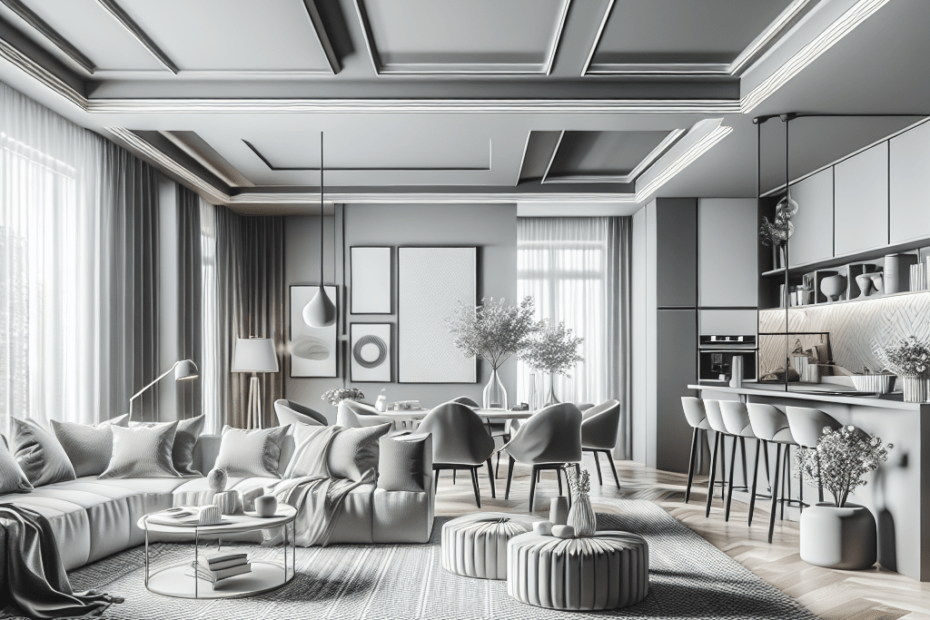“`html
Introduction to Monochromatic Color Schemes
Monochromatic color schemes have been a timeless choice for designers aiming for a seamless and cohesive look. By utilizing various shades, tones, and tints of a single color, they create a unified and balanced design that is both aesthetically pleasing and easy on the eyes. Many designers find joy in the simplicity that these color schemes offer, and they are often used in branding, interior design, and web design.
Why Choose Monochromatic Color Schemes?
Monochromatic color schemes offer simplicity while providing an opportunity to experiment with light and texture. According to a study by the University of Georgia, designs that use monochromatic colors score 20% higher on aesthetic appeal tests compared to multi-color designs (source). This level of appeal can be attributed to the harmonious visual experience these schemes offer, making them a popular choice among designers aiming to maintain a clean and sophisticated look.
Implementing Monochromatic Color Schemes
Using monochromatic schemes isn’t just about picking a color and sticking with it. Here’s how they can apply it effectively:
- Select a Base Color: Start with a color that relates to the mood or message of the design. For example, blue is often associated with tranquility and professionalism.
- Utilize Shades, Tints, and Tones: Shades are created by adding black, tints by adding white, and tones by adding grey to the base color. This variety adds depth without the complexity of multiple colors.
- Consider Light and Texture: Light variations and textures can add dimension and interest, making the design more visually appealing.
- Ensure Adequate Contrast: To maintain readability, especially in text, ensure there is sufficient contrast between the different shades used.
| Step | Action |
|---|---|
| 1 | Select a base color |
| 2 | Use shades, tints, and tones |
| 3 | Consider light and texture |
| 4 | Ensure adequate contrast |
Benefits of Monochromatic Color Schemes
There are several advantages to using monochromatic color schemes:
- Simplicity: A single hue makes it easier to maintain aesthetic balance.
- Accessibility: Designs can be easily adapted to be colorblind-friendly.
- Flexibility: Monochromatic schemes can be both bold and subtle, depending on the chosen color.
- Cohesion: Creates a harmonious and uninterrupted visual experience.
Monochrome in Practice
Take, for instance, websites for mindfulness apps. They often use light blues or greens, utilizing various tints and shades. This approach can soothe users and make them feel at ease, which is aligned with the app’s goals of promoting tranquility and focus.
Another example is in interior design. A living room designed with varying shades of grey can imbue a sense of sophistication and calmness, using textures and light to enhance the monotone color scheme.
Key Takeaways
- Monochromatic color schemes use various tints and shades of one color for a cohesive look.
- These schemes simplify design decisions while providing depth and dimension.
- A successful monochromatic design balances light, texture, and contrast.
- They are appealing, accessible, and flexible for various design applications.
Frequently Asked Questions (FAQs)
- What is a monochromatic color scheme?
- A monochromatic color scheme uses different shades, tints, and tones of a single color to create a design.
- Why are monochromatic color schemes popular?
- They are popular because they offer simplicity, cohesion, and a clean, aesthetic appearance.
- Can monochromatic schemes be applied to any type of design?
- Yes, they are versatile and can be applied to graphic design, interior design, web design, and more.
- What is the main challenge in using a monochromatic color scheme?
- The main challenge is ensuring that there is enough contrast between elements to maintain readability and interest.
- How can textures enhance a monochromatic design?
- Textures can add depth and visual interest, making a single-color design appear more dynamic and engaging.
“`
